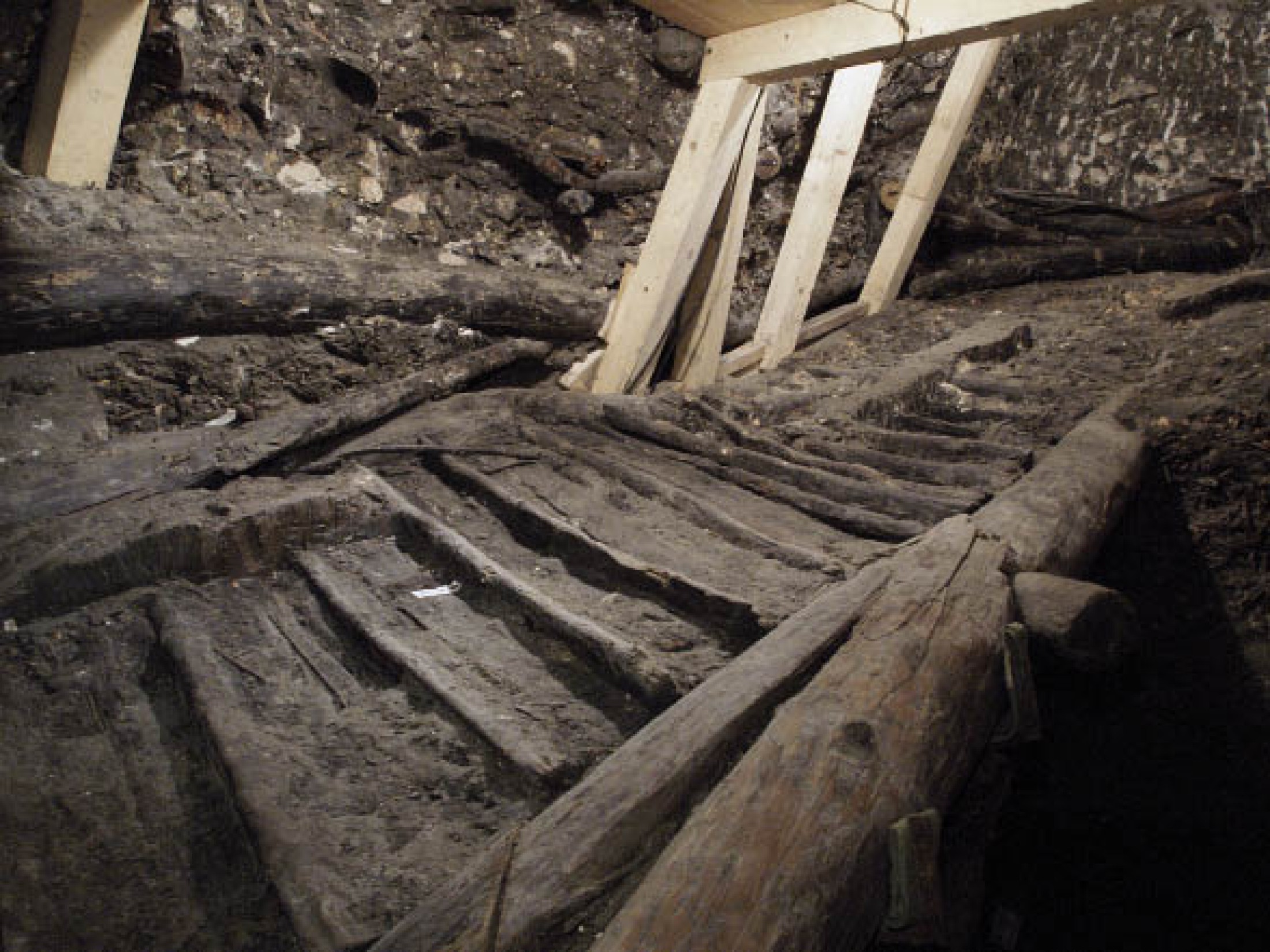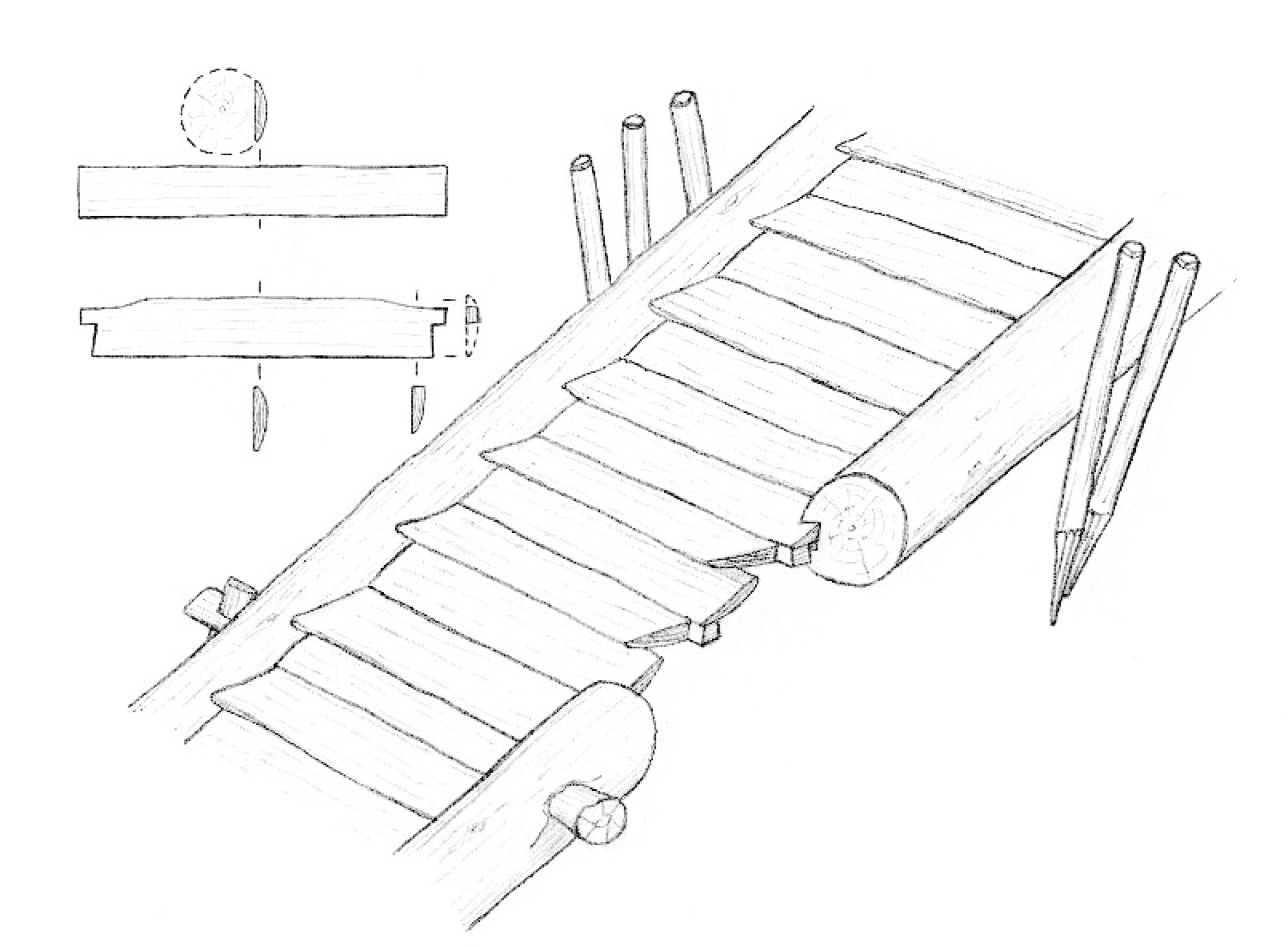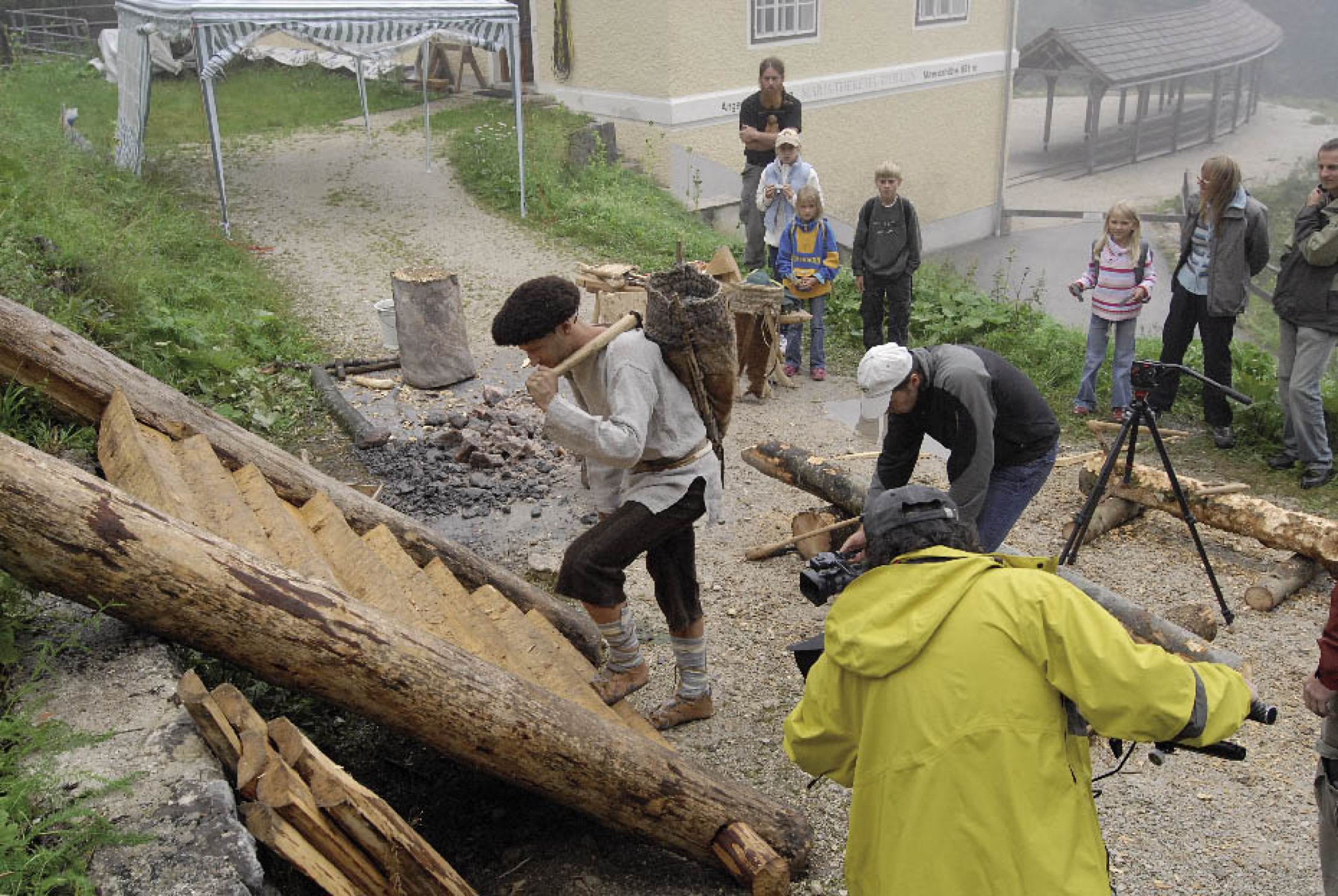Transport Paths - The Hallstatt staircase
In 2003, a wooden stairway was discovered in the Christian von Tuschwerk. Tree-ring dating techniques have made it possible to date this staircase to 1108 BC, making it the oldest surviving set of stairs in Europe. Each step was 1.20m wide, meaning that miners could ascend and descend at the same time.Find site and dating
Construction method
Similar finds
The stairs from the Christian von Tuschwerk mine




